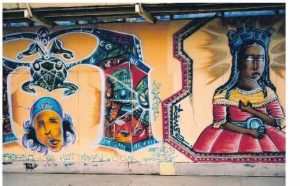 Magical Rituals in Brasil
Magical Rituals in Brasil
Spheres – national spiritual magazine
Brasil is the fifth biggest country in the world, covering a large chunk of South America, and an ancient, primal form of spirituality still thrives there.
When most people think of Brasil, they picture colourful Mardi Gras parades and gorgeous girls in g-strings on endless stretches of golden sand, exotic cocktails, all night carnivals and sexy, steamy dances. It does have all that, but it’s also a country of deep spirituality. It’s the largest Catholic nation in the world, after the Portuguese colonised it in 1500 and forced their religion on the inhabitants, and the famous Christ the Redeemer statue towers over the beautiful city of Rio as a symbol of Brasilian Christianity.
It is also a place of mystical beliefs, traditional rituals and goddess worship. In the lush jungles, shamans continue their ancient practices and reverence for nature. People flock to the village of Sao Thome das Letras, located on a bed of quartz rock in the mountains and famous for the number of UFO sightings, to communicate with aliens. Near the political centre of Brasilia, in a compound built near a sacred waterfall, Saint John of God performs miracle healings, pulling tumours out of people with his bare hands.
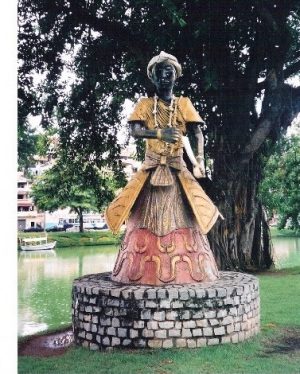 And in the state of Bahia, in north-east Brasil, the mysterious practice of Candomble flourishes. It’s a spiritual tradition based on primal African rituals, the animistic beliefs of the Amerindian people native to this land, and the worship of orixas (pronounced orishas), a pantheon of deities with qualities not unlike the pagan gods and goddesses. Some of the primary ones include Exu, the god of fire and crossroads; Ogun, the divinity of war and agriculture; Ossaim, who rules healing and herbs; Oxala, father of the orixas and god of creation; and Iemanja, mother of the orixas and goddess of the sea and childbirth.
And in the state of Bahia, in north-east Brasil, the mysterious practice of Candomble flourishes. It’s a spiritual tradition based on primal African rituals, the animistic beliefs of the Amerindian people native to this land, and the worship of orixas (pronounced orishas), a pantheon of deities with qualities not unlike the pagan gods and goddesses. Some of the primary ones include Exu, the god of fire and crossroads; Ogun, the divinity of war and agriculture; Ossaim, who rules healing and herbs; Oxala, father of the orixas and god of creation; and Iemanja, mother of the orixas and goddess of the sea and childbirth.
Candomble was brought to Brasil by African slaves, but like voodoo in New Orleans, it has absorbed elements of Catholicism because it had to hide its deities within the saints of the enforced religion, and entwined with local practices to create a unique form of worship. It incorporates healing, herbal lore, offerings and trance communication with the deities, and is now practised throughout South America and in Germany, Italy, Portugal and Spain.
Candomble’s centre is in Salvador, the capital of Bahia and one of the oldest cities in the New World. More than 80 per cent of the population has Black African ancestry, and it is a vibrant, artistic, sun-drenched town, recognised as the centre of Afro-Brasilian culture.
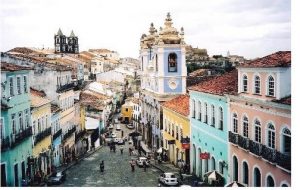 Salvador is split dramatically by an escarpment that divides it in two, with the Cidade Alta (upper town) located 85 metres above the Cidade Baixa (lower town). They are linked by the Lacerda, which was built in 1873 and was Brasil’s first elevator. The lower town is the industrial section, with the commercial and residential areas up above. I stayed for a week in Salvador’s historic Pelhourino district, an area of cobbled streets renowned as a cultural melting pot of music, museums, colourful colonial architecture and historical monuments. Its pretty town squares are alive with sound, heat and light, with sparkling fountains, women in traditional costumes selling artwork, young children in bright clothes trying to tie ribbons around your wrist (for a fee!), and demonstrations of capoeira, the Afro-Brasilian dance form that merges martial arts, music, history and warfare.
Salvador is split dramatically by an escarpment that divides it in two, with the Cidade Alta (upper town) located 85 metres above the Cidade Baixa (lower town). They are linked by the Lacerda, which was built in 1873 and was Brasil’s first elevator. The lower town is the industrial section, with the commercial and residential areas up above. I stayed for a week in Salvador’s historic Pelhourino district, an area of cobbled streets renowned as a cultural melting pot of music, museums, colourful colonial architecture and historical monuments. Its pretty town squares are alive with sound, heat and light, with sparkling fountains, women in traditional costumes selling artwork, young children in bright clothes trying to tie ribbons around your wrist (for a fee!), and demonstrations of capoeira, the Afro-Brasilian dance form that merges martial arts, music, history and warfare.
At night the area comes alive, with bands playing, people eating late in outdoor cafes, aromatic corner stalls dishing up traditional delicacies, snatches of Natalie Imbruglia songs mingling with traditional music, kids running around with fairy floss and the rich scent of dende (palm) oil in the clear night air. It’s amazing to walk amongst it all – the vitality and energy is infectious, and every night there seems to be an outdoor party or street carnival.
 If you tire of wandering around the fascinating streets, peering into old churches – there are 365 in Salvador – and sampling the traditional foods, there are lots of other activities, from learning to salsa dance and Portuguese language classes to gemstone tours with crystal experts. One day I got up at dawn to drive north to the Tamar Turtle Sanctuary, on one of the beaches Mick Jagger and his friends famously cavorted on in the 60s, where the habitat is protected so these beautiful creatures can come ashore to feed and lay eggs in safety. Tamar is shortened from Tartaruga Marinha, Portuguese for sea turtles, and the project combines research, scientific and technical knowledge with practical breeding programs and community awareness. It’s open to the public, so you can pop by and see the turtles up close and personal.
If you tire of wandering around the fascinating streets, peering into old churches – there are 365 in Salvador – and sampling the traditional foods, there are lots of other activities, from learning to salsa dance and Portuguese language classes to gemstone tours with crystal experts. One day I got up at dawn to drive north to the Tamar Turtle Sanctuary, on one of the beaches Mick Jagger and his friends famously cavorted on in the 60s, where the habitat is protected so these beautiful creatures can come ashore to feed and lay eggs in safety. Tamar is shortened from Tartaruga Marinha, Portuguese for sea turtles, and the project combines research, scientific and technical knowledge with practical breeding programs and community awareness. It’s open to the public, so you can pop by and see the turtles up close and personal.
Another day I sailed around the islands in Salvador’s bay, serenaded by three musicians playing traditional music. We docked at one island to swim in the crystal clear coves and admire the goddess sculptures along the sea front, then at Ilha Itaparica, the large island the sun sets behind during the stunning Salvador sunsets, for a tour that included the Fonte da Bica, fountain of the waters of life, a mineral water fountain with reputed healing powers.
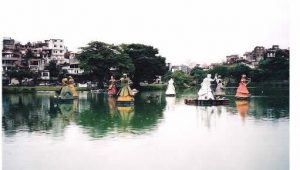 One of my favourite places in Salvador was Dique do Tororo, a picturesque, landscaped lake filled with 12 huge, awesome sculptures of the orixas, each more than seven metres tall and two tons heavy. Erected in a sacred circle, they seem to be part of their own unique ritual, looming out of the water and filling the city with some of the ancient, primal magic of Candomble. There are more statues lining the paths around the lake, intimidating yet beautiful manifestations of this old religion.
One of my favourite places in Salvador was Dique do Tororo, a picturesque, landscaped lake filled with 12 huge, awesome sculptures of the orixas, each more than seven metres tall and two tons heavy. Erected in a sacred circle, they seem to be part of their own unique ritual, looming out of the water and filling the city with some of the ancient, primal magic of Candomble. There are more statues lining the paths around the lake, intimidating yet beautiful manifestations of this old religion.
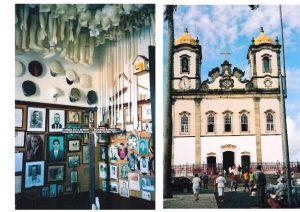 Another interesting site is the historic Church of Nosso Senhor do Bonfim, the most famous of Salvador’s many Catholic churches, which is also significant to those who practice Candomble. The Christ aspect it’s dedicated to, Our Lord of Bonfim, is associated with Oxala, the father of the orixas and creator of humankind, and the church’s special feast days combine both spiritual traditions. I went to visit its shrine of miracle cures, where people leave representations of the condition they claim was fixed through prayer. The room is a bit creepy, like a Marilyn Manson video, filled with wax legs, heads, arms, body parts, crutches, photos and letters. Upstairs in the museum there are further examples, with cases full of jewellery body parts like little silver hearts, ceramic eyes and gemstone lungs.
Another interesting site is the historic Church of Nosso Senhor do Bonfim, the most famous of Salvador’s many Catholic churches, which is also significant to those who practice Candomble. The Christ aspect it’s dedicated to, Our Lord of Bonfim, is associated with Oxala, the father of the orixas and creator of humankind, and the church’s special feast days combine both spiritual traditions. I went to visit its shrine of miracle cures, where people leave representations of the condition they claim was fixed through prayer. The room is a bit creepy, like a Marilyn Manson video, filled with wax legs, heads, arms, body parts, crutches, photos and letters. Upstairs in the museum there are further examples, with cases full of jewellery body parts like little silver hearts, ceramic eyes and gemstone lungs.
However the reason I went to Salvador was to experience a Candomble ritual. So, as the sun began to set one night, I gathered in the square with a few other curious travellers, and was driven to the outskirts of town for the hottest, sweatiest experience of my life. The ritual takes place in a terreiro, the house of a priestess, which was down a dark, winding alleyway, marked with a white flag. They are open to the neighbourhood, and to a few tourists, but the preparation of offerings is done in the afternoon, in secrecy. We walked up the steep stairs off the street, and were welcomed by a candle for fire and different plants for purification. It was very squishy and very hot inside the house – an Italian lady in our group was angry at how “unorganised” it was, but this wasn’t being run for our benefit, we’d merely been granted permission to watch, so the steamy room, heat and lack of water was just part of the experience.
There were about 20 people involved in the ceremony, mostly women, all dressed in elaborate white costumes and ranging in age from a young girl to a beautiful teenager, to a motherly figure and a wizened old crone. The ritual began with three male drummers, who don’t go into trance, banging out a primal rhythm. Then the chanting began, with the participants dancing anticlockwise as they spoke, sang and prayed to their gods. After about 45 minutes of dancing, the first of the participants went into trance, followed at intervals by the others. A young girl looked after them, wiping the sweat from their faces and guiding them if they needed it, as they had their eyes closed and seemed totally unaware of their surroundings.
In Candomble, worshippers communicate with their gods by allowing them to possess them in such rituals. After a participant had been taken over they were led to an altar, where they knelt to recover before rejoining the swirl of chanting and dance. It was fascinating to watch, and I’m so grateful they allowed us to be there, and to experience this tiny insight into their beliefs.
Serene Conneeley is a writer and healer with a passion for travel, adventure, natural healing and the magic of the earth. She is the author of Seven Sacred Sites: Magical Journeys That Will Change Your Life and A Magical Journey: Your Diary of Inspiration, Adventure and Transformation, and the creator of the new CD Sacred Journey: A Meditation to Connect You to the Magic of the Earth.


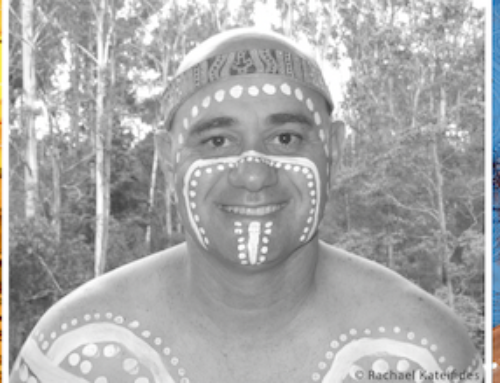
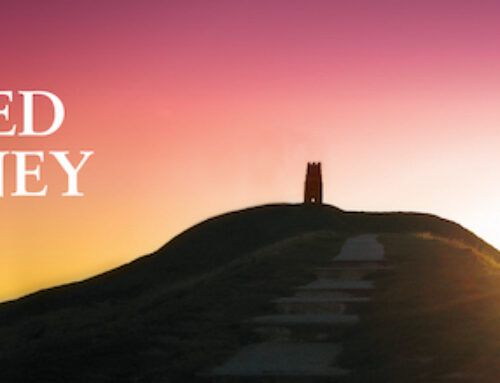



Get Social